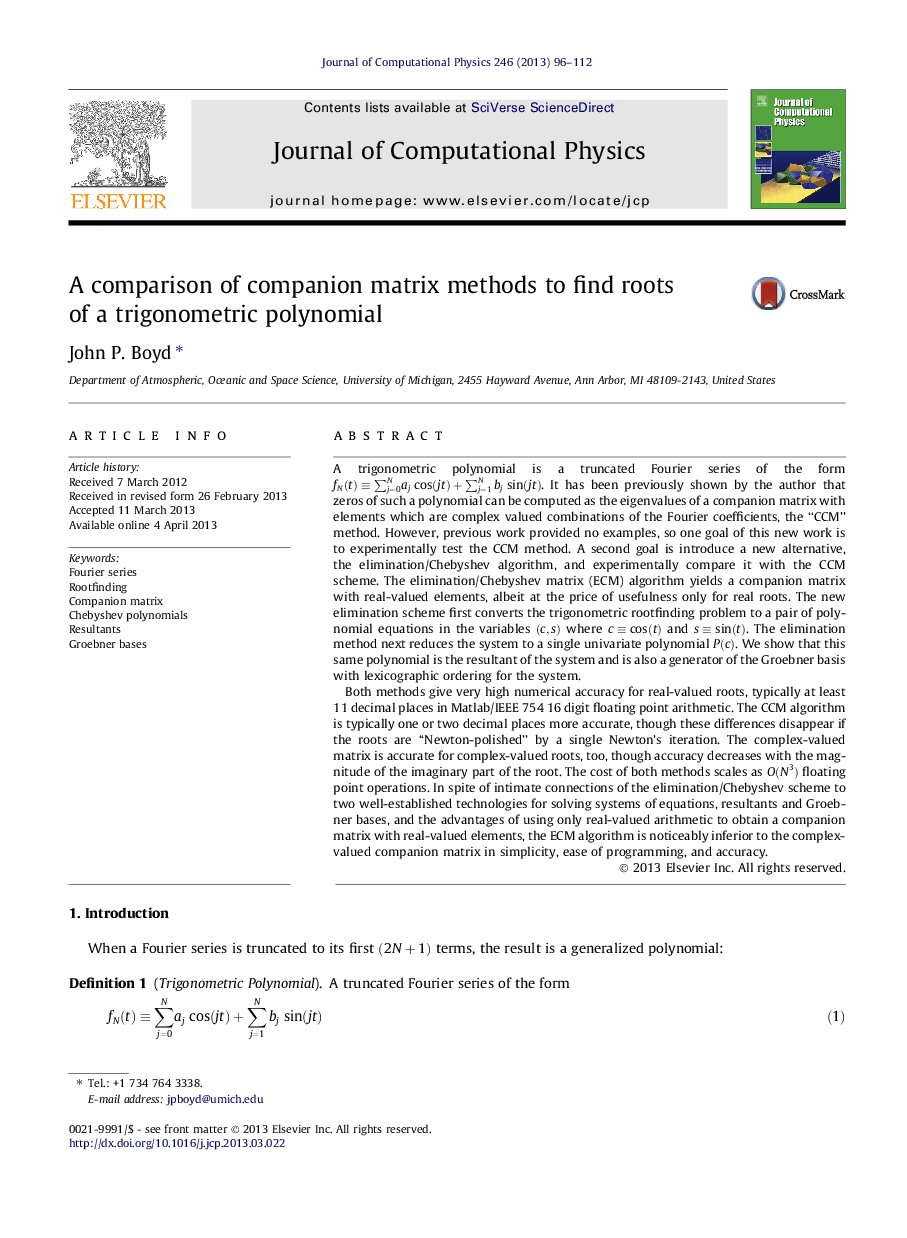| کد مقاله | کد نشریه | سال انتشار | مقاله انگلیسی | نسخه تمام متن |
|---|---|---|---|---|
| 519534 | 867671 | 2013 | 17 صفحه PDF | دانلود رایگان |

A trigonometric polynomial is a truncated Fourier series of the form fN(t)≡∑j=0Najcos(jt)+∑j=1Nbjsin(jt). It has been previously shown by the author that zeros of such a polynomial can be computed as the eigenvalues of a companion matrix with elements which are complex valued combinations of the Fourier coefficients, the “CCM” method. However, previous work provided no examples, so one goal of this new work is to experimentally test the CCM method. A second goal is introduce a new alternative, the elimination/Chebyshev algorithm, and experimentally compare it with the CCM scheme. The elimination/Chebyshev matrix (ECM) algorithm yields a companion matrix with real-valued elements, albeit at the price of usefulness only for real roots. The new elimination scheme first converts the trigonometric rootfinding problem to a pair of polynomial equations in the variables (c,s)(c,s) where c≡cos(t)c≡cos(t) and s≡sin(t)s≡sin(t). The elimination method next reduces the system to a single univariate polynomial P(c)P(c). We show that this same polynomial is the resultant of the system and is also a generator of the Groebner basis with lexicographic ordering for the system.Both methods give very high numerical accuracy for real-valued roots, typically at least 11 decimal places in Matlab/IEEE 754 16 digit floating point arithmetic. The CCM algorithm is typically one or two decimal places more accurate, though these differences disappear if the roots are “Newton-polished” by a single Newton’s iteration. The complex-valued matrix is accurate for complex-valued roots, too, though accuracy decreases with the magnitude of the imaginary part of the root. The cost of both methods scales as O(N3)O(N3) floating point operations. In spite of intimate connections of the elimination/Chebyshev scheme to two well-established technologies for solving systems of equations, resultants and Groebner bases, and the advantages of using only real-valued arithmetic to obtain a companion matrix with real-valued elements, the ECM algorithm is noticeably inferior to the complex-valued companion matrix in simplicity, ease of programming, and accuracy.
Journal: Journal of Computational Physics - Volume 246, 1 August 2013, Pages 96–112